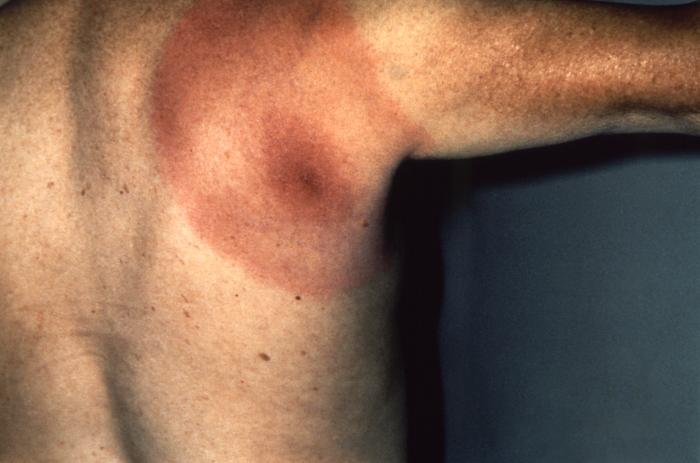Lyme disease remains the most commonly reported vectorborne disease in the United States with confirmed cases were reported from 48 states and the District of Columbia during the period of 2008-2015, according to a Centers for Disease Control and Prevention (CDC) Surveillance Summary published today.

During 2008–2015, a total of 275,589 cases of Lyme disease were reported to CDC (208,834 confirmed and 66,755 probable).
In the report, states were classified for surveillance purposes (state surveillance categories) as high incidence, low incidence, and neighboring. States with an average annual incidence during this reporting period of ≥10 confirmed Lyme disease cases per 100,000 population were classified as high incidence. States that share a border with those states or that are located between areas of high incidence were classified as neighboring states. All other states were classified as low incidence.
Fourteen states, all located in the Northeast, mid-Atlantic, and upper Midwest regions, met the criteria for classification as states with high incidence (Connecticut, Delaware, Maine, Maryland, Massachusetts, Minnesota, New Hampshire, New Jersey, New York, Pennsylvania, Rhode Island, Vermont, Virginia, and Wisconsin). During 2008–2015, these states accounted for 95.2% of all reported cases and 95.7% of confirmed cases reported in the United States.
Seven of the 14 states displayed an overall decreasing trend in the number of confirmed cases.
Eleven states and the District of Columbia were classified as neighboring states (Illinois, Indiana, Iowa, Kentucky, Michigan, North Carolina, North Dakota, Ohio, South Dakota, Tennessee, and West Virginia). During 2008–2015, confirmed cases accounted for 71.0% of the total cases reported from neighboring states.
In contrast to states with high incidence, the majority (eight of 11) of neighboring states displayed an overall increasing trend in the number of confirmed cases reported. Among the remaining 25 states, all classified as states with low incidence, confirmed cases accounted for a lower percentage of total cases reported (62.5%).
Concerning clinical manifestations, approximately three fourths (72.2%) of patients had erythema migrans; 27.5% had arthritis; and 1.5% had carditis, defined for surveillance purposes as acute second- or third-degree atrioventricular block. Approximately 12.5% had a neurologic manifestation: 8.4% had facial palsy, 3.8% had radiculoneuropathy, 1.3% had lymphocytic meningitis, and <1.0% had encephalitis.
Related:
- LymeDisease.org’s Lorraine Johnson discusses MyLymeData and a new NSF grant
- Tickborne diseases: Laboratory diagnosis and treatment
- Lyme disease treatment: Some thoughts
- The history behind the Lyme disease controversy and what’s new in Lyme research
- A look at the differences in geographical distribution of Lyme disease
- A new Lyme disease test: Dr Richard Marconi discusses the GLD Test
- Lyme disease, Stevia and the quest for better treatments
- Lyme disease: Borrelia biofilm in the body demonstrated
- Lyme disease: The Borrelia mayonii discovery
- Powassan virus: The spread is inevitable
- Lyme: Q & A with Paul Auwaerter, MD
- Babesiosis cases likely on the rise



High incidence states and low incidence states are evaluated by different rules. How were “neighboring states” evaluated? This is a critical point in understanding these effects.